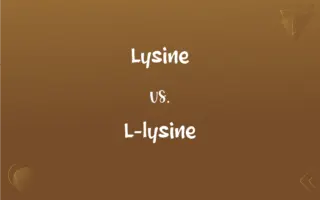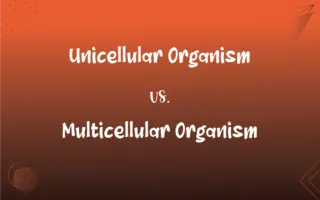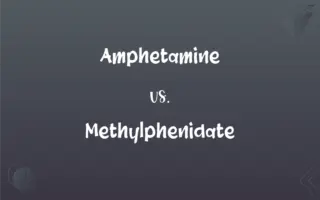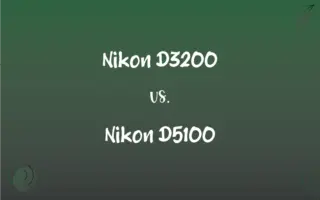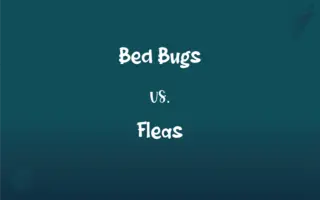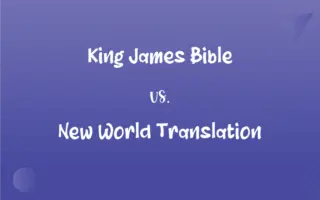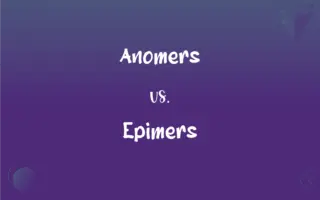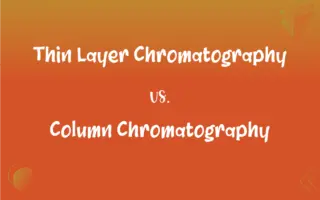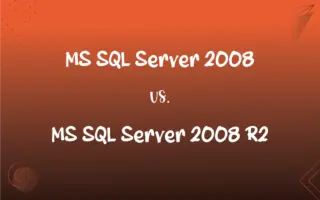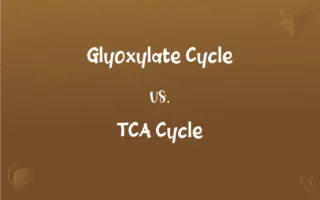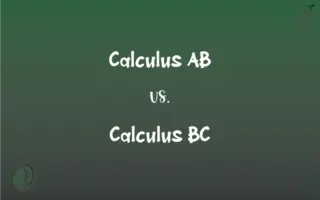Cardiac Muscle vs. Skeletal Muscle: What's the Difference?
Edited by Janet White || By Harlon Moss || Updated on October 10, 2023
Cardiac muscle, found in the heart, involuntarily controls heartbeats; skeletal muscle, attached to bones, enables voluntary movement. Different in structure, control, location, and function.

Key Differences
Cardiac muscles are specialized muscles located in the heart and play a pivotal role in pumping blood throughout the body. They involuntarily contract and relax, ensuring continuous heart function without the need for conscious thought. On the other hand, skeletal muscles are attached to bones via tendons and facilitate movement by contracting and relaxing in response to voluntary commands from the nervous system.
Skeletal muscles are predominant in areas related to movement and physical activity, such as arms, legs, and torso. They provide the force required for motion and are under conscious control, enabling actions like running, jumping, and lifting. In contrast, cardiac muscles are autonomous, meaning they operate independently of conscious thought, providing the relentless, rhythmic contractions required to circulate blood.
In terms of cellular structure, cardiac muscle cells are typically short, branched, and contain a single nucleus. They are interconnected through intercalated discs, which facilitate rapid electrical signal transmission between cells. Skeletal muscle cells, however, are long, cylindrical, multinucleated, and do not feature intercalated discs, meaning each muscle fiber operates independently of its neighbors.
Fatigue is also a distinguishing feature between cardiac and skeletal muscles. The former are highly resistant to fatigue due to the presence of a large number of mitochondria, which provide the energy required for continuous contractions. Skeletal muscles, while also containing mitochondria, are more susceptible to fatigue and require periods of rest to recover from exertion.
Comparison Chart
Location
Found only in the heart.
Attached to bones throughout the body.
ADVERTISEMENT
Control
Involuntary and autonomous.
Voluntary, controlled consciously.
Cell Structure
Short, branched, single nucleus.
Long, cylindrical, multinucleated.
Fatigue
Highly resistant to fatigue.
Susceptible to fatigue and requires rest.
Function
Pumps blood through the body.
Facilitates voluntary movement.
Cardiac Muscle and Skeletal Muscle Definitions
Cardiac Muscle
Cardiac muscle is involuntary muscle found exclusively in the heart.
The cardiac muscle ensures continuous blood circulation without conscious effort.
ADVERTISEMENT
Skeletal Muscle
Skeletal muscles are predominantly under conscious control, facilitating intentional movement.
I decide to lift my arm, and the skeletal muscle responds to this conscious command.
Cardiac Muscle
Cardiac muscle is self-excitatory and maintains its own rhythmic contractions.
Even outside the body, cardiac muscle can maintain its rhythmic contractions.
Skeletal Muscle
Skeletal muscles are voluntary muscles attached to bones, enabling movement.
Skeletal muscle contractions allow us to perform physical activities like jumping.
Cardiac Muscle
Cardiac muscle is fatigue-resistant due to a high mitochondrial content.
Abundant mitochondria in the cardiac muscle ensure persistent energy supply.
Skeletal Muscle
Skeletal muscle fibers are long, multinucleated, and feature a striated appearance.
Under the microscope, skeletal muscle showcases clear, alternating bands of color.
Cardiac Muscle
Cardiac muscle cells are striated and connected via intercalated discs.
Intercalated discs in cardiac muscle facilitate synchronized contractions.
Skeletal Muscle
Skeletal muscles generate force by contracting and pulling on bones.
When the biceps skeletal muscle contracts, it elevates the forearm.
Cardiac Muscle
Cardiac muscle controls the heart's contraction and relaxation phases.
The rhythmic contraction of the cardiac muscle circulates blood effectively.
Skeletal Muscle
Skeletal muscle can rapidly contract but is susceptible to fatigue.
After vigorous exercise, skeletal muscle needs time to recover and regenerate energy.
FAQs
How is the structure of cardiac muscle unique?
They are branched, single-nucleated, and have intercalated discs.
What is the main role of cardiac muscle?
To pump blood throughout the body autonomously.
Are skeletal muscles voluntary?
Yes, skeletal muscles are under voluntary control.
Where is cardiac muscle found?
Exclusively in the heart.
Are skeletal muscles involved in breathing?
Yes, muscles like the diaphragm are crucial for respiration.
Does cardiac muscle control blood flow?
Yes, by regulating the heart’s pumping action.
How does physical exercise affect skeletal muscle?
It can enhance strength, endurance, and size of skeletal muscles.
Can skeletal muscles resist fatigue?
No, skeletal muscles are susceptible to fatigue.
Are cardiac muscles striated?
Yes, cardiac muscles are striated.
Does cardiac muscle require nervous system input to contract?
No, it can contract autonomously.
How are skeletal muscles attached to bones?
Through tendons.
Is cardiac muscle present in animals and humans alike?
Yes, it is present in the hearts of both.
What enables skeletal muscle movement?
The contraction and relaxation of muscle fibers.
What type of cells are in skeletal muscles?
Multinucleated, cylindrical muscle fibers.
What is the primary function of skeletal muscle?
To facilitate voluntary movement by contracting and pulling on bones.
Are skeletal muscle cells branched?
No, skeletal muscle cells are long and cylindrical.
Can cardiac muscle function outside the body?
Yes, it can contract independently of the body for a short time.
Can skeletal muscle control be lost?
Yes, through conditions like paralysis.
Can cardiac muscle regenerate after damage?
Very limitedly; mostly, it forms scar tissue.
How does cardiac muscle regulate heart rhythm?
Through autonomous electrical conduction and contractions.
About Author
Written by
Harlon MossHarlon is a seasoned quality moderator and accomplished content writer for Difference Wiki. An alumnus of the prestigious University of California, he earned his degree in Computer Science. Leveraging his academic background, Harlon brings a meticulous and informed perspective to his work, ensuring content accuracy and excellence.
Edited by
Janet WhiteJanet White has been an esteemed writer and blogger for Difference Wiki. Holding a Master's degree in Science and Medical Journalism from the prestigious Boston University, she has consistently demonstrated her expertise and passion for her field. When she's not immersed in her work, Janet relishes her time exercising, delving into a good book, and cherishing moments with friends and family.

























